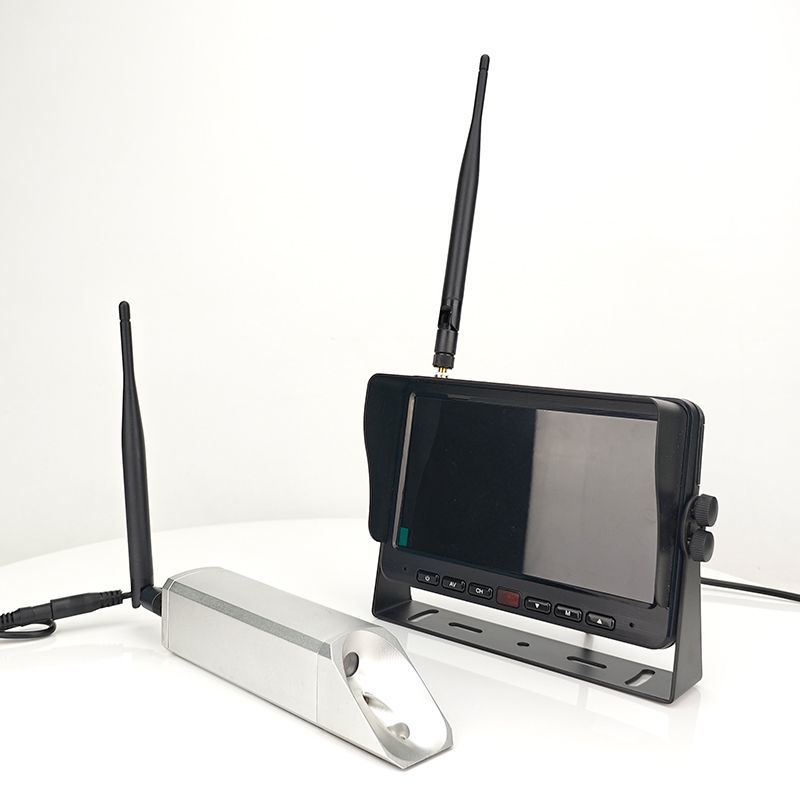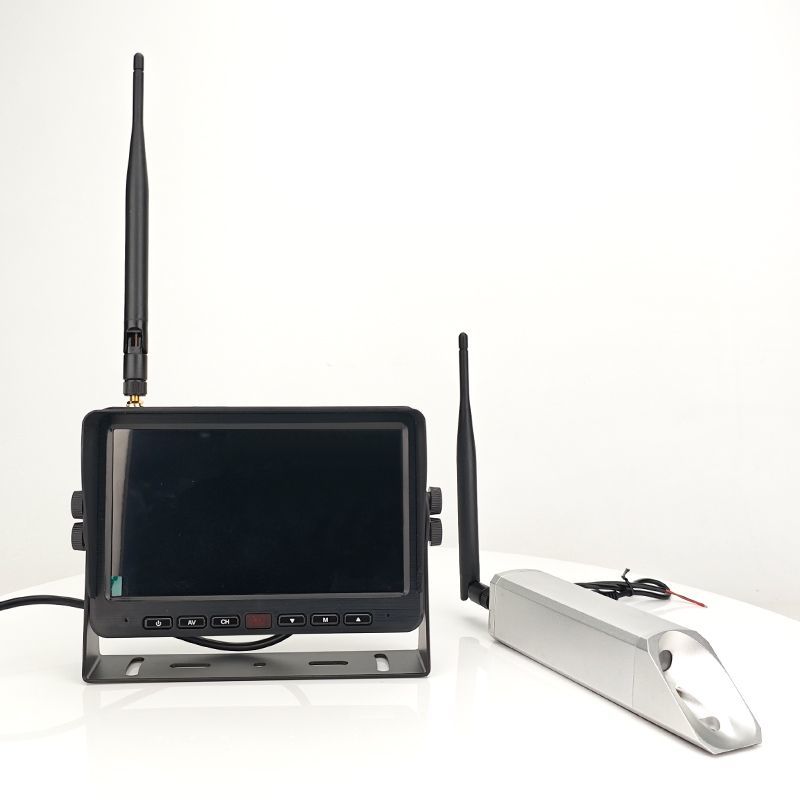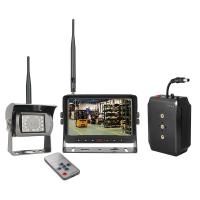| Contrast | 20.83402778 |
| Resolution | 1024 x (RGB) x 600 |
| Brightness | 450cd/m2 |
| System Format | PAL/NTSC |
| Operating Frequency | 2412-2484MHZ |
| Operating Frequency | 2412-2484MHZ |
| Impedance | 50Ω |
| Transmit Output Power | 19dBM |
| Transmit Distance | Open field distance of 250 meters |
System composition
Camera: It is the image acquisition device of the system, usually
installed in the front, rear, side or top of the forklift, used to
capture the environment around the forklift. Night vision cameras
generally use special photosensitive elements and lenses to enhance
imaging capabilities under low light conditions.
Display: Installed in the forklift cab to display the images
captured by the camera. The display usually has high brightness,
high contrast and good viewing angle so that the driver can see the
picture clearly under various light conditions.
Signal transmission device: Responsible for transmitting the image
signal collected by the camera to the display. The wired
transmission method transmits signals through cables, and the
signal is stable, but the installation is relatively complicated;
the wireless transmission method uses wireless communication
technology, such as Wi-Fi, Bluetooth or dedicated wireless
frequency bands, etc., which has the advantage of convenient
installation, but there may be problems with signal interference.
Power supply: Provides power support for devices such as cameras
and displays. It can be connected to the forklift's power system or
use an independent battery pack. Some systems also have battery
charging management functions to ensure that the equipment can
continue to obtain power during work.





















